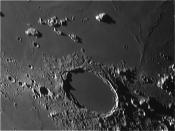The Allegory of the Cave In Plato's The Republic, one of his most salient criticisms of the Homeric world was that the complete lack of the distinction between truth and falsity, between the real and the unreal, and between light and darkness. It was through Plato's argument for and in his search of the Truth and the luminosity of Ideas through which he elevated the importance of solitary contemplation. His highest objective was his attainment of that which he thought was truly eternal, the Truth or the Idea, from which he justified the crucial and aggressive shift toward a lack of interpersonal human relations. For Plato, the only way to attain such a vital understanding of the Truth, the Eternal Ideas, was to immerse oneself in rigorous philosophical study in solitude.
The Allegory of the Cave In the allegory of the Cave, one of the most complex, intricate, and interesting parts of the Republic, Plato illustrated what the adverse consequences were for living without Truth because of the inability to see the Truth.
"Imagine an underground chamber like a cave "æ In this chamber are men who have been prisoners there since they were children, their legs and necks being so fastened that they can only look straight ahead of them and cannot turn their heads. "[The Republic: Book 7, Section 514b] An analytical view of this passage reveals that the alternative world without Truth. It was a world that to Plato and to anyone reading this passage is a world that was completely unacceptable and itself almost inhumane. He described an underground cave where there were men who have been prisoners since they were children, men who have lived without freedom, without Truth, and without contemplation. It was a world of darkness, imprisonment, and ignorance. Coming...


